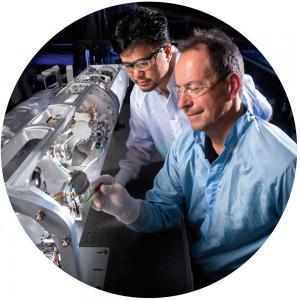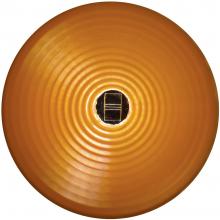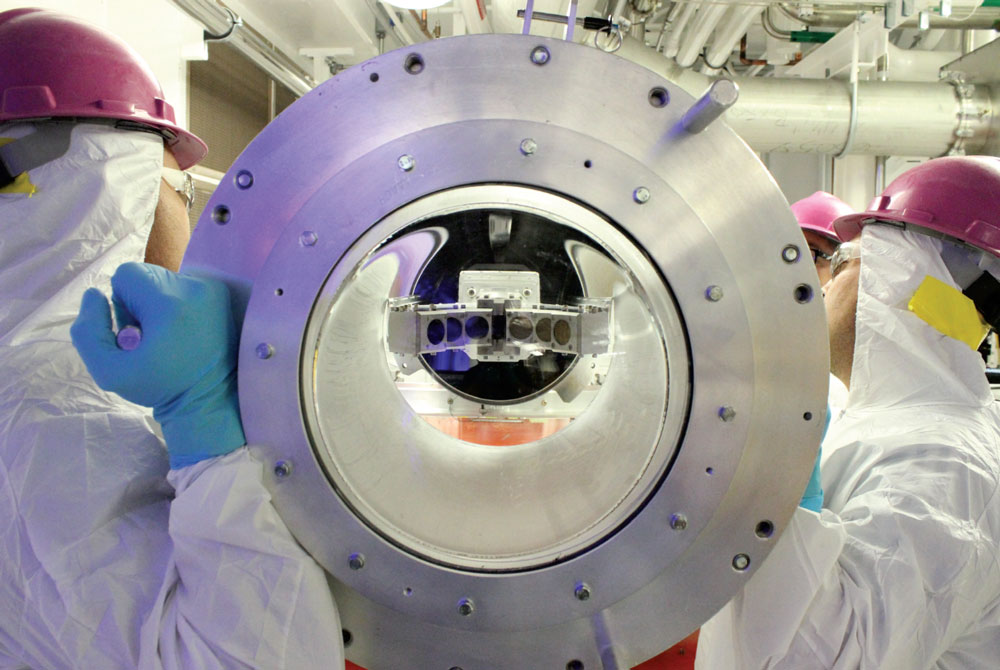Supporting stockpile stewardship through a wide range of experiments and pursuit of laser fusion ignition, and operating as a national user facility for high-energy-density science
Stockpile Stewardship HED Science Experiments
National Ignition Facility (NIF) high-energy-density (HED) science experiments in FY 2019 provided crucial support to the W80-4 life-extension program. These tests helped weapons designers evaluate replacement options for aged materials in the W80 warhead that meet high standards for safety, security, and effectiveness. Such experiments will also be vital to the success of the W87-1 modification program (see The W80-4 and W87-1 Programs). Moreover, HED science experiments at NIF explore wide-ranging physical phenomena central to stockpile stewardship. Many tests jointly address challenges arising in stockpile modernization, the pursuit of inertial confinement fusion (ICF) ignition, and developing a deeper understanding of physics issues pertinent to stockpile stewardship. The shots provide information about the properties of materials at extreme conditions, radiation hydrodynamics and transport, thermonuclear processes, and material mixing. The data are used to improve and validate 3D simulation models ofweapons performance.
Ramping-up Pressure on Materials
In FY 2019, Laboratory researchers made significant advances in capabilities to perform ramp compression experiments. Ramp compression is important to several types of HED materials science experiments: equation of state (EOS), x-ray diffraction to study crystalline structure, and material strength. In these experiments, x rays from a laser-heated holhraum gradually compress a material sample so that it remains relatively cool as it is squeezed to extreme pressure conditions—up to 50 megabars for diamond. Materials now being tested range from diamond and iron (for planetary science) to materials of special interest for stockpile stewardship. In April 2019, researchers conducted the first ramp compression experiment with plutonium-242 (a low-radioactivity isotope).
For EOS experiments, the principal diagnostic is line-imaging VISAR (Velocity Interferometer System for Any Reflector), invented by Sandia National Laboratories (SNL) in the 1970s and matured at LLNL for NIF. In 2019, a joint LLNL–SNL team successfully commissioned a line-imaging diagnostic at Sandia's Z Pulsed Power Facility, where high magnetic fields and electrical currents compress targets to HED conditions. Technology transfer of the diagnostic was challenging because of space constraints and the Z machine's more difficult operating environment.
Progress in Pursuing Fusion Ignition
Scientists are examining ways to make high-velocity implosions more spherical. To better manage problematic laser–plasma instabilities, researchers are combining improvements in the design of the fuel capsule and the surrounding hohlraum, proper pulse shaping and beam energy balance, and to the extent possible, increased NIF laser energy. The NIF team must also reduce hydrodynamic instabilities in the imploding capsule and the mix of materials into the fuel's central hot spot. To this end, engineers from LLNL and General Atomics developed and tested a fill tube 2 micrometers in diameter.The 10-micrometer-diameter fill tube has been a significant source of hot-spot degradation. Engineers are also exploring ways to produce more uniform capsules to reduce instabilities and jets of materials into the hot spot. As for diagnostic improvements, the advanced radiographic capability (ARC) short-pulse, high-intensity laser obtained the first radiographic images of an imploded fuel and shell. The images confirmed the presence of low-mode asymmetries, which had been inferred from other detectors.
Discovery Science at NIF
Discovery Science experiments at NIF provide unique opportunities to answer challenging questions about HED science and advance knowledge in nuclear physics, plasma physics, materials science, and astrophysics. In many cases, experiments have required development of new types of diagnostics that have become very useful for national security applications or have led to significant scientific breakthroughs. In FY 2019, LLNL researchers and collaborators published results of proton-acceleration experiments in the journal Physics of Plasmas. Using NIF and ARC, the team produced beams of protons with 10 times more energy than expected—14 to 18 million electronvolts. Such beams can be precisely targeted on materials and provide new ways for studying extreme states of matter, such as that found in stellar and planetary interiors. Proton acceleration has potential for many other applications in HED science and ICF research.
Nuclear Survivability of Components
Target area operators remove a diagnostic assembly with six samples after a test. NIF provides a critical capability for testing the survivability of components from nuclear weapons and other military assets that may face real-world nuclear environments. Researchers subject parts, such as electronics, and other materials to intense doses of x rays and neutrons, and in other experiments, they probe material properties at extreme pressures and temperatures.








